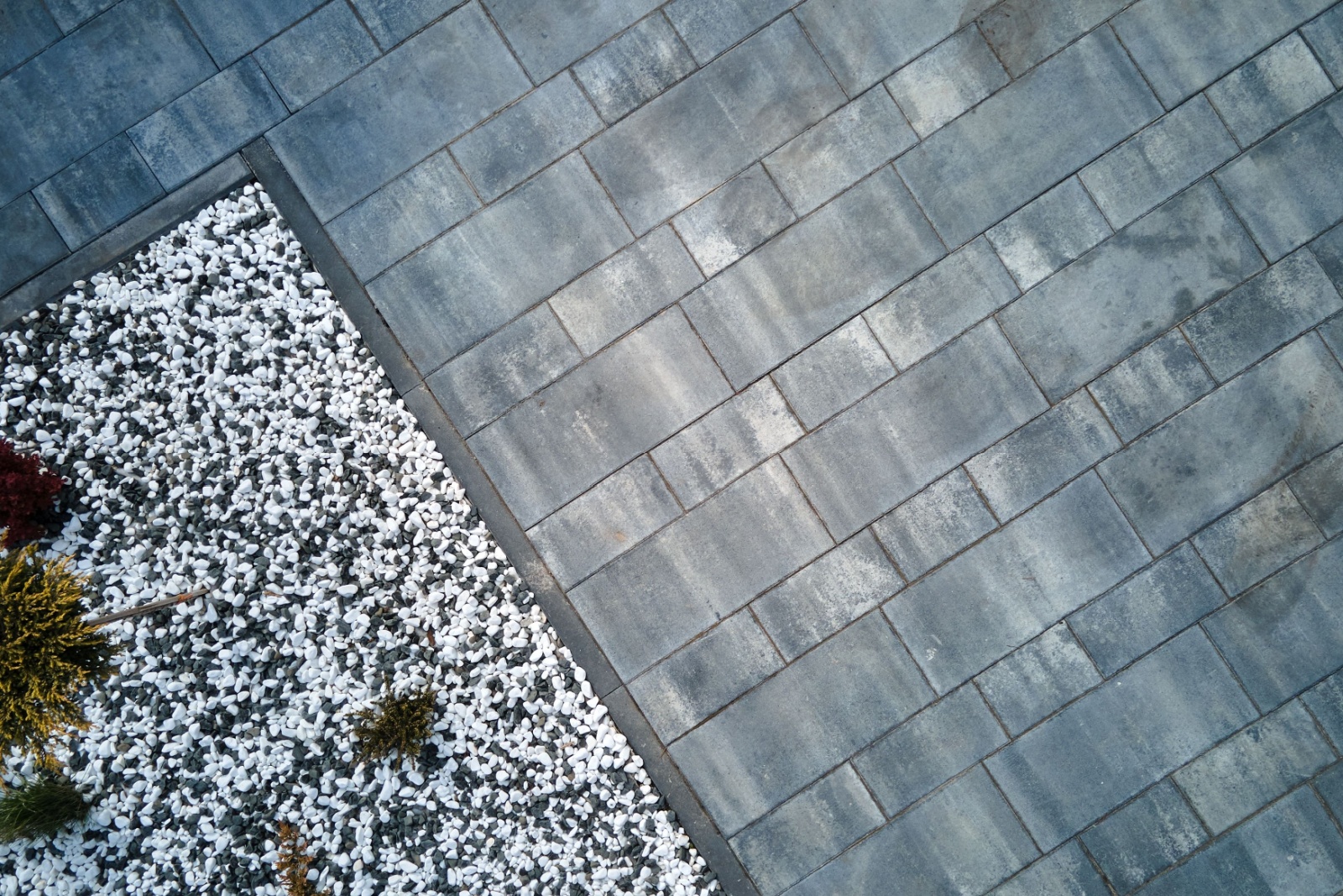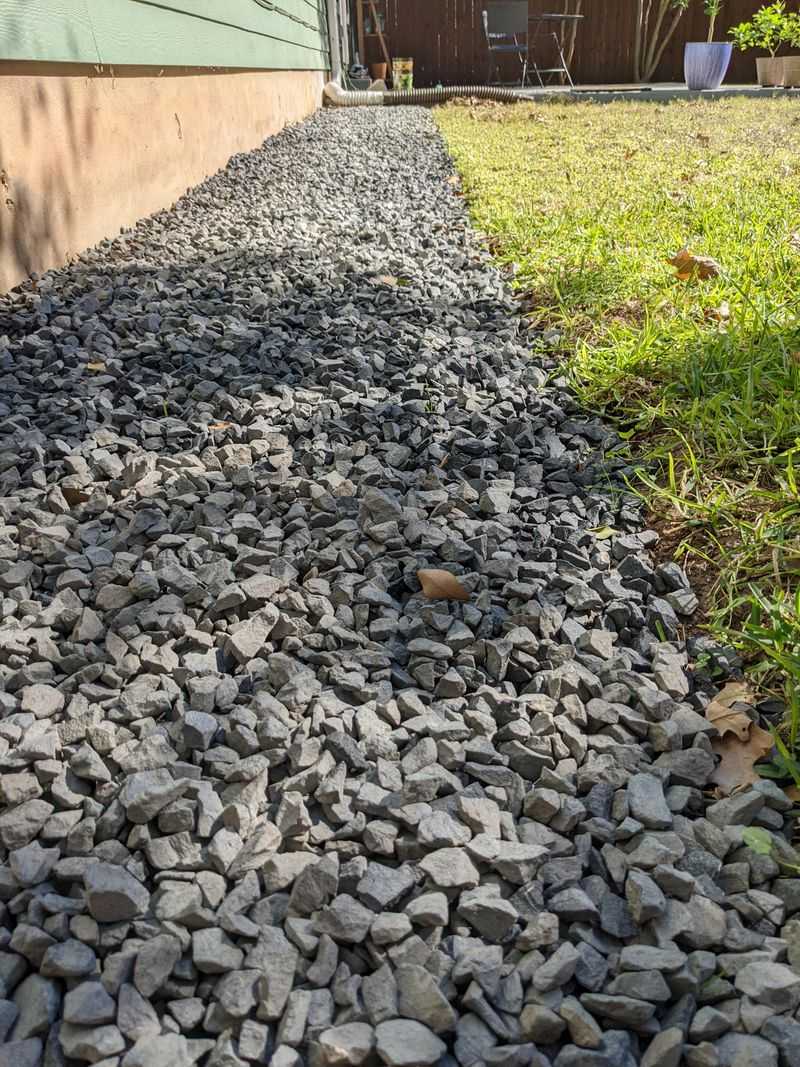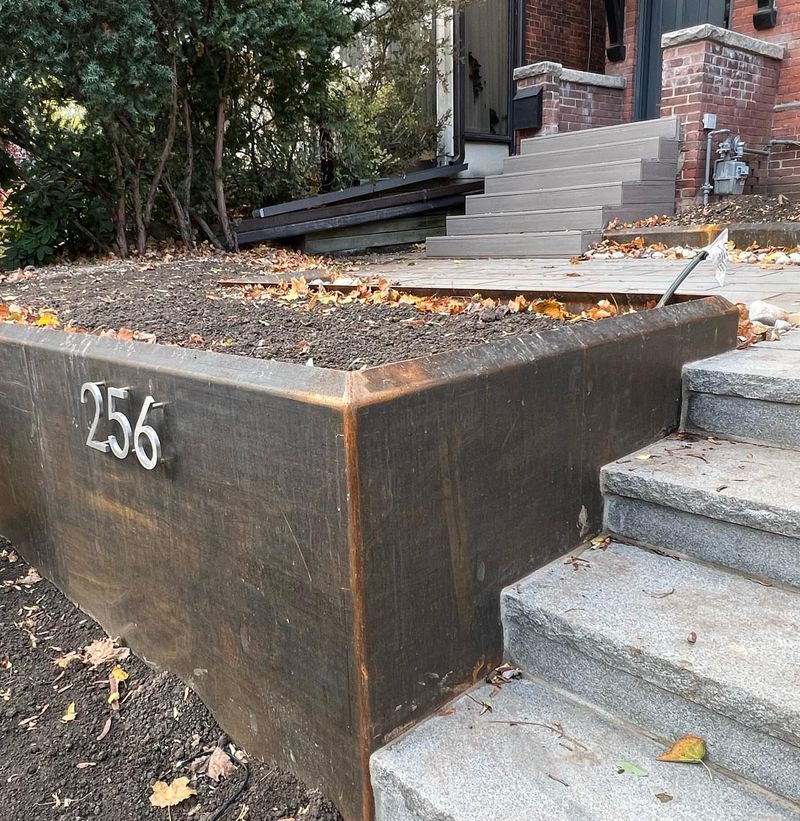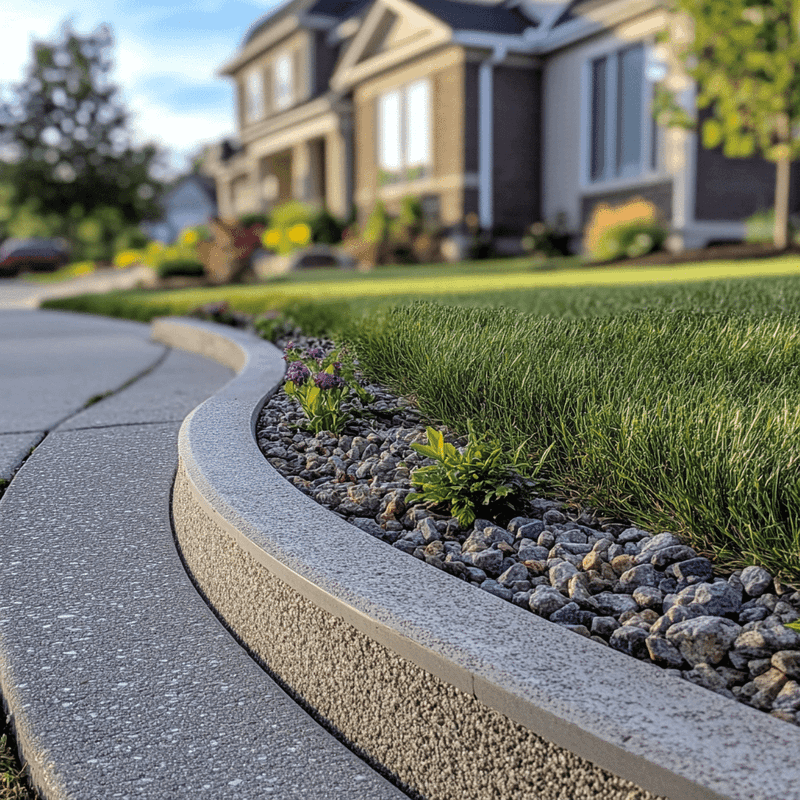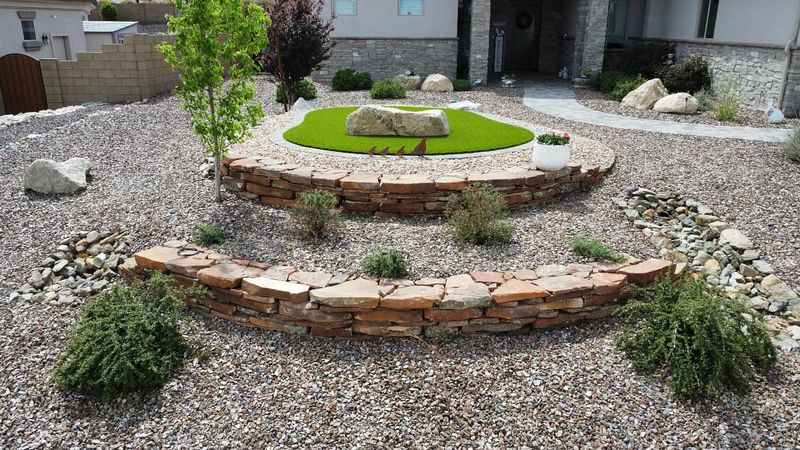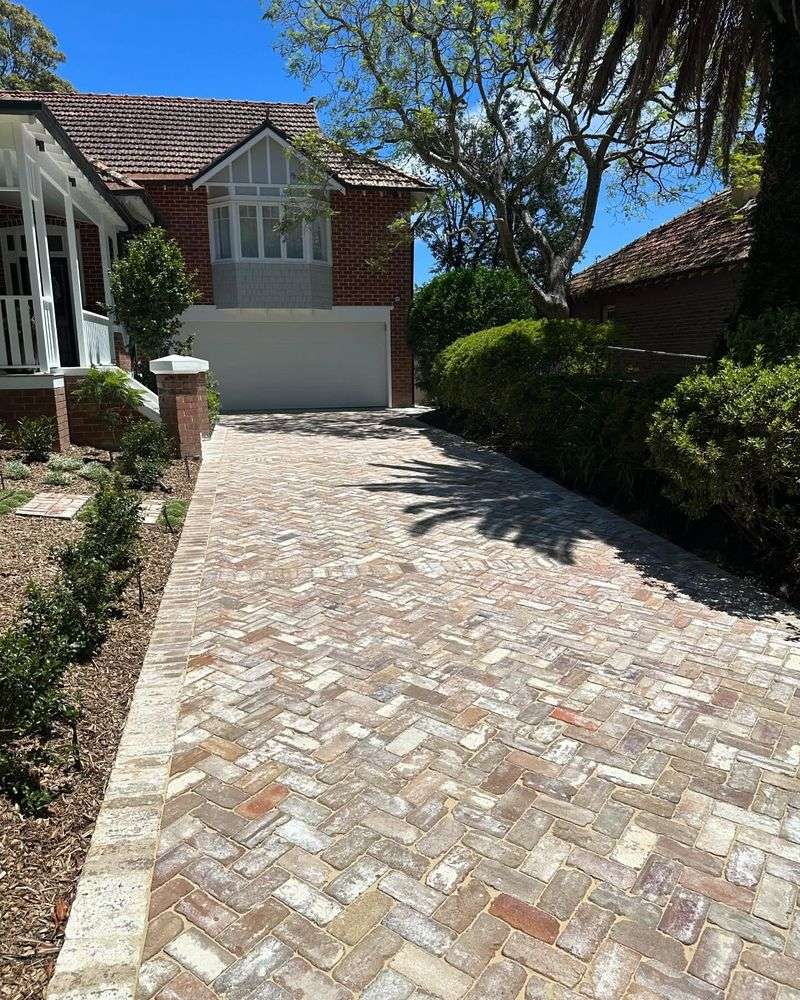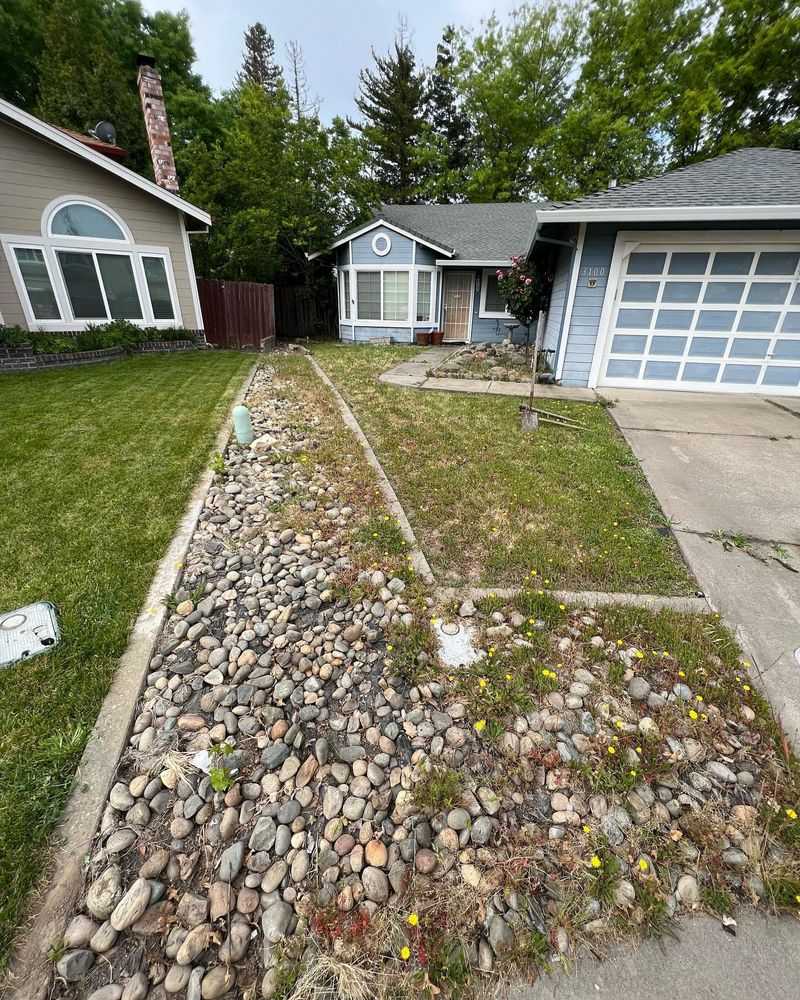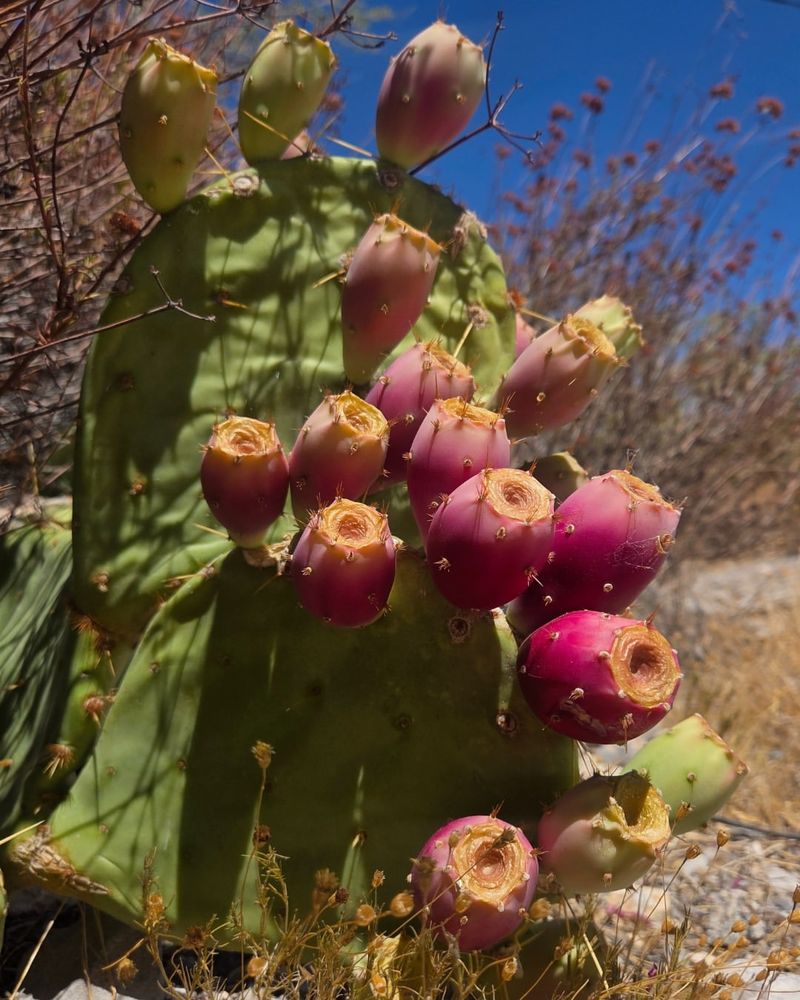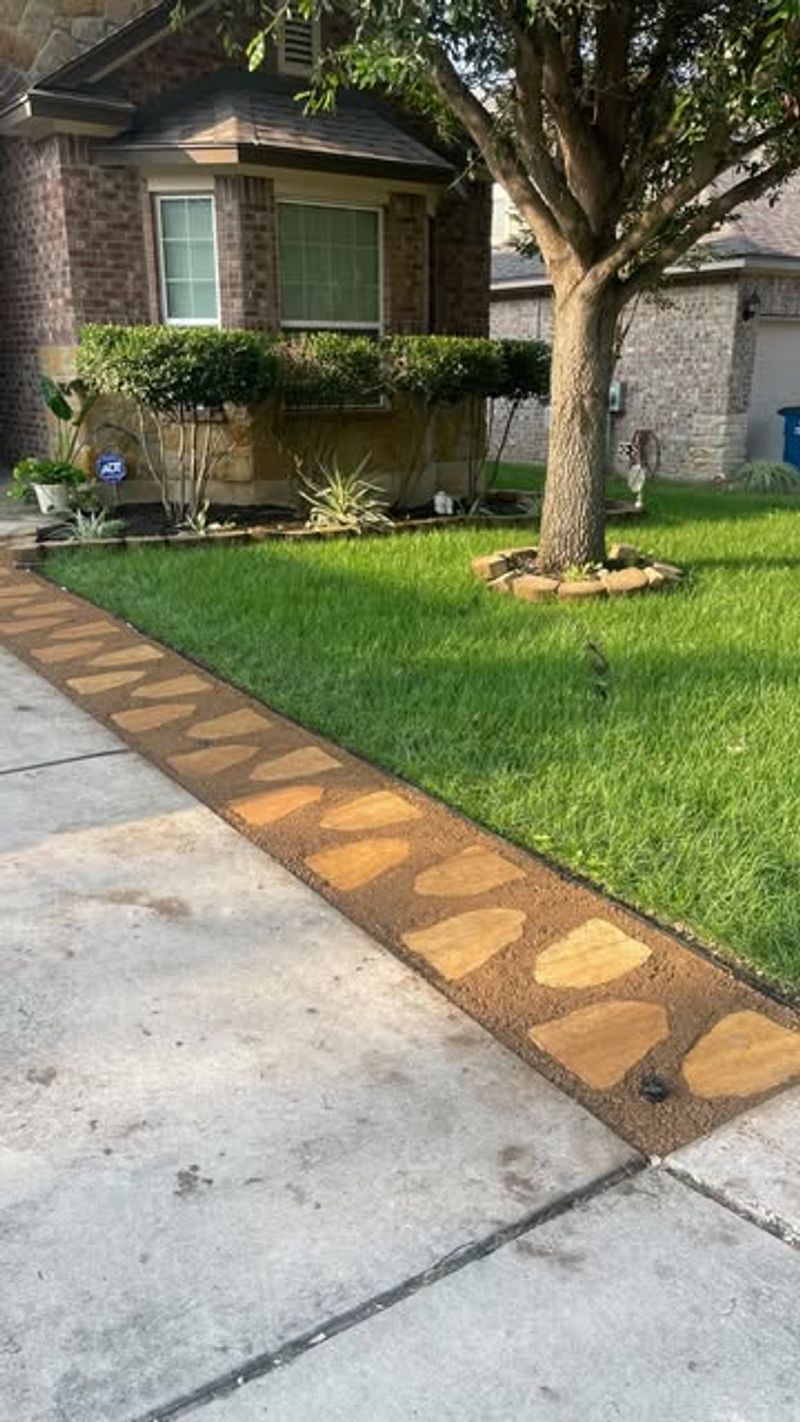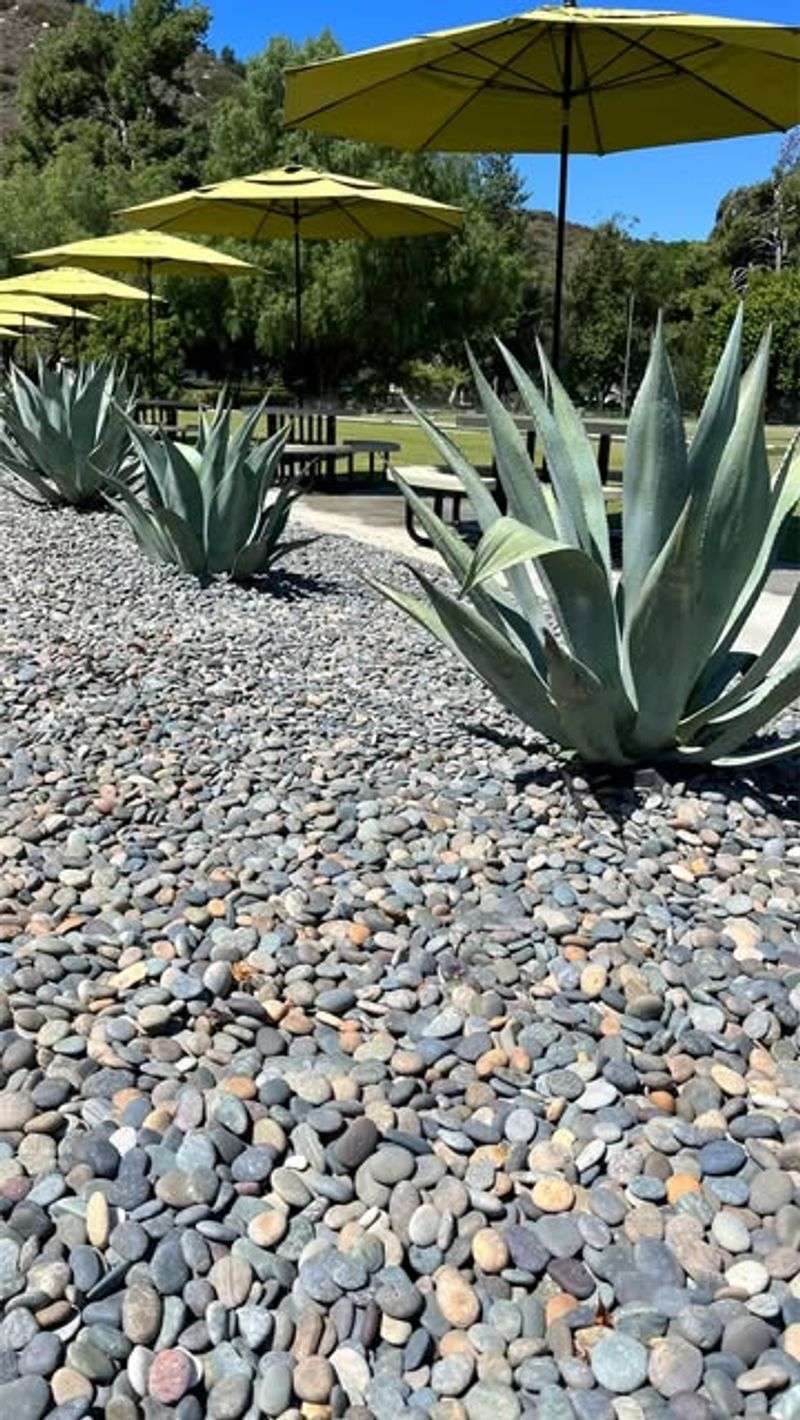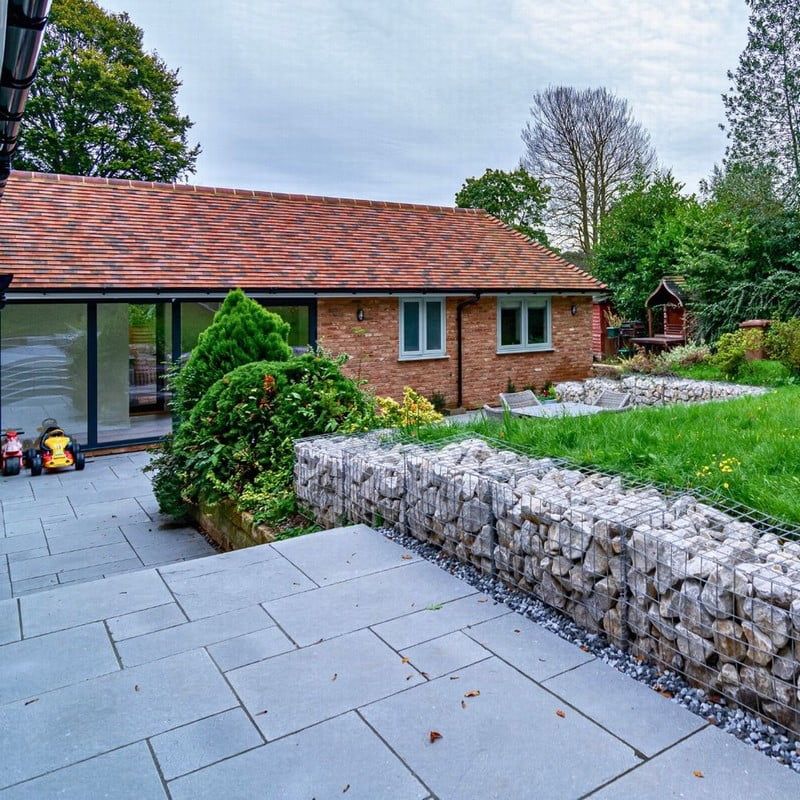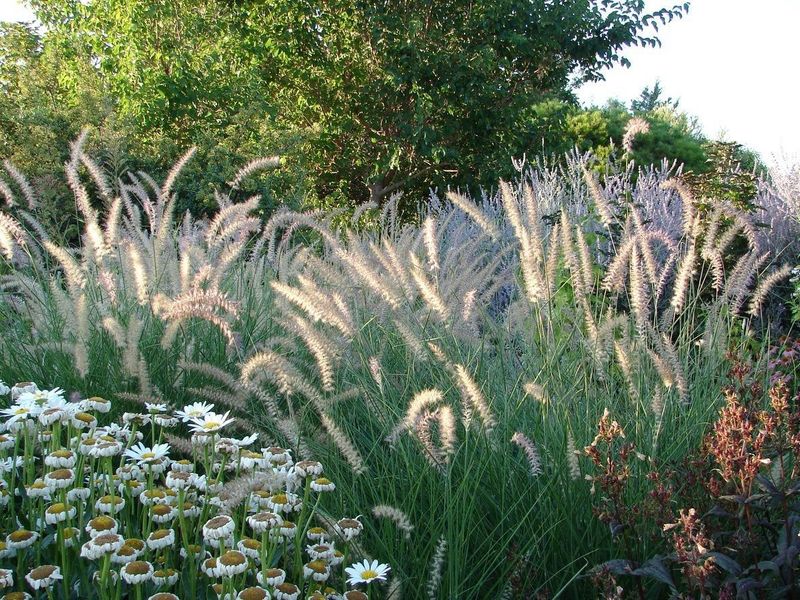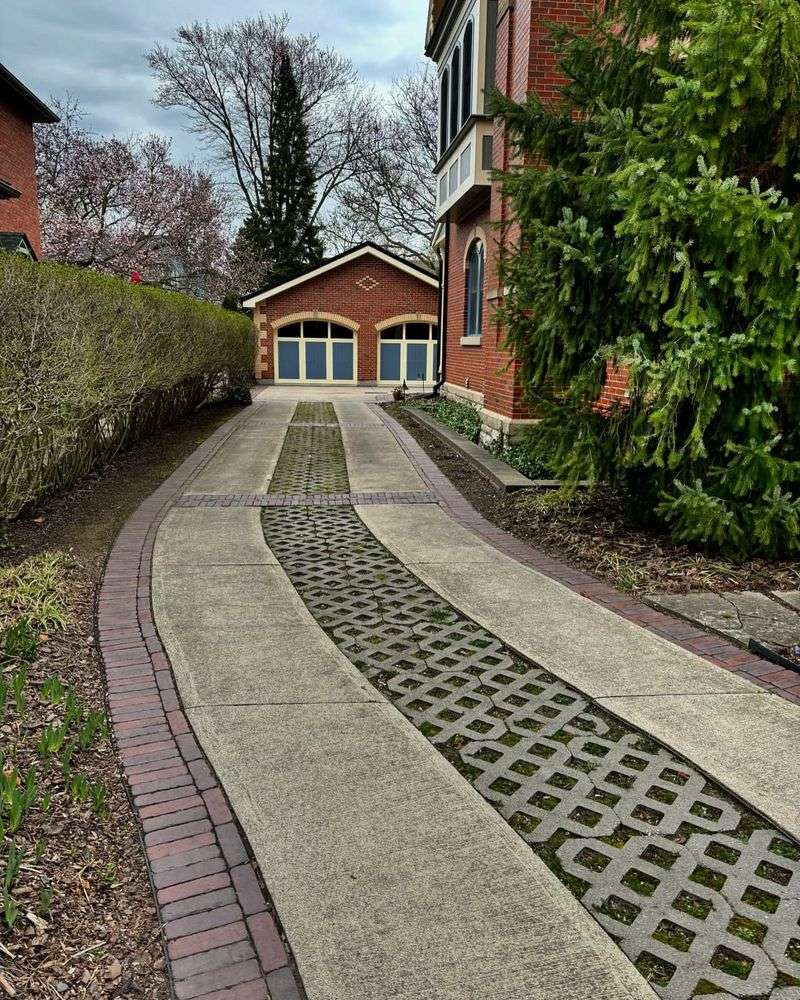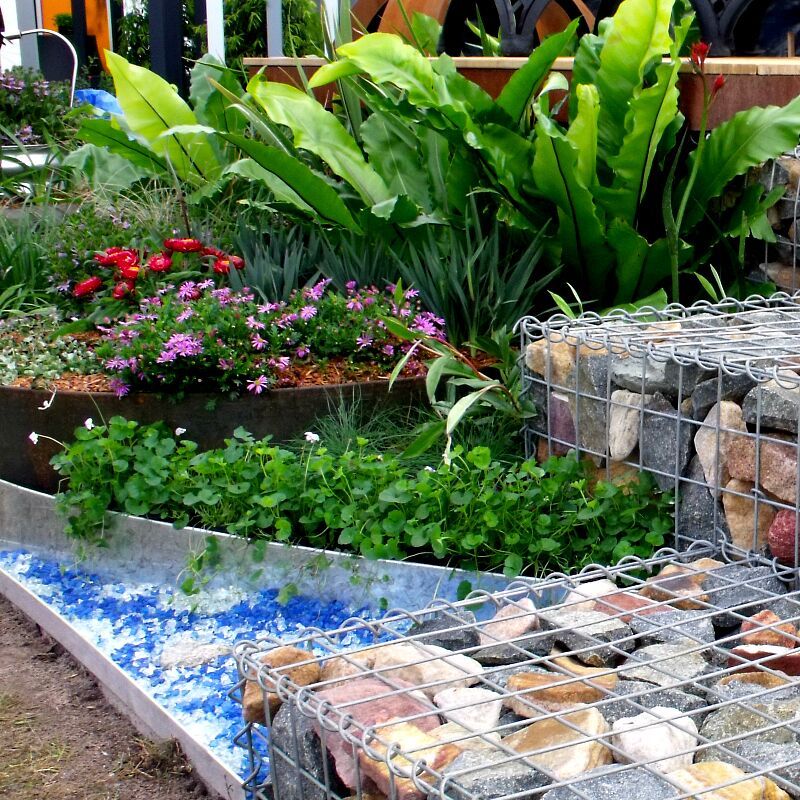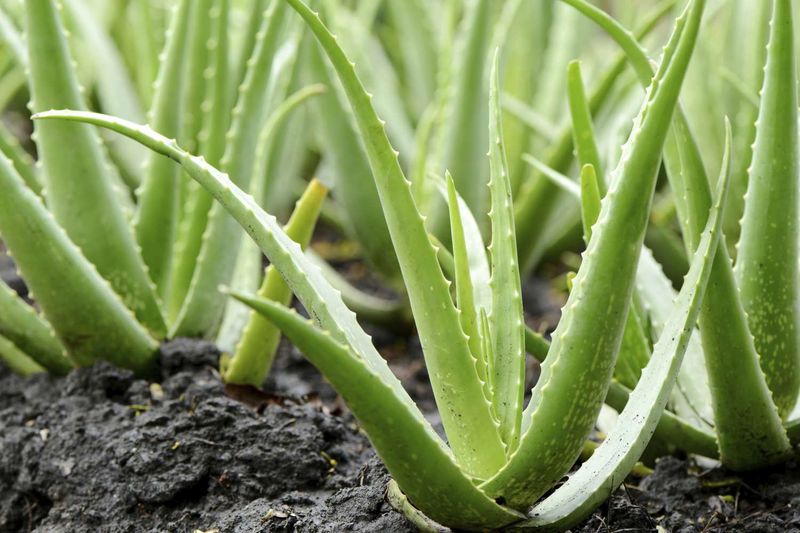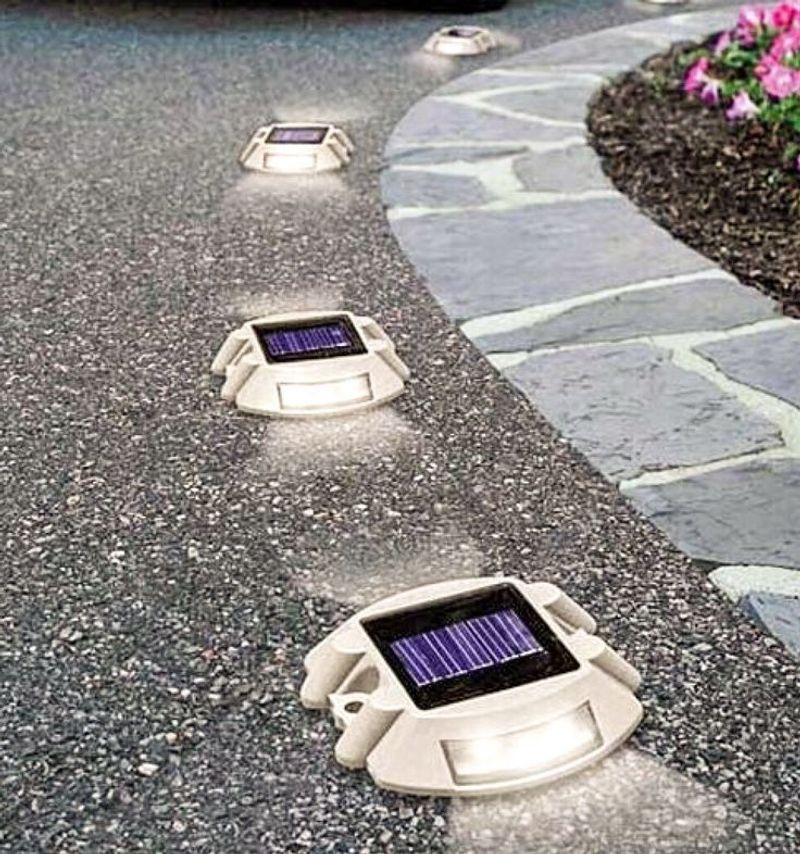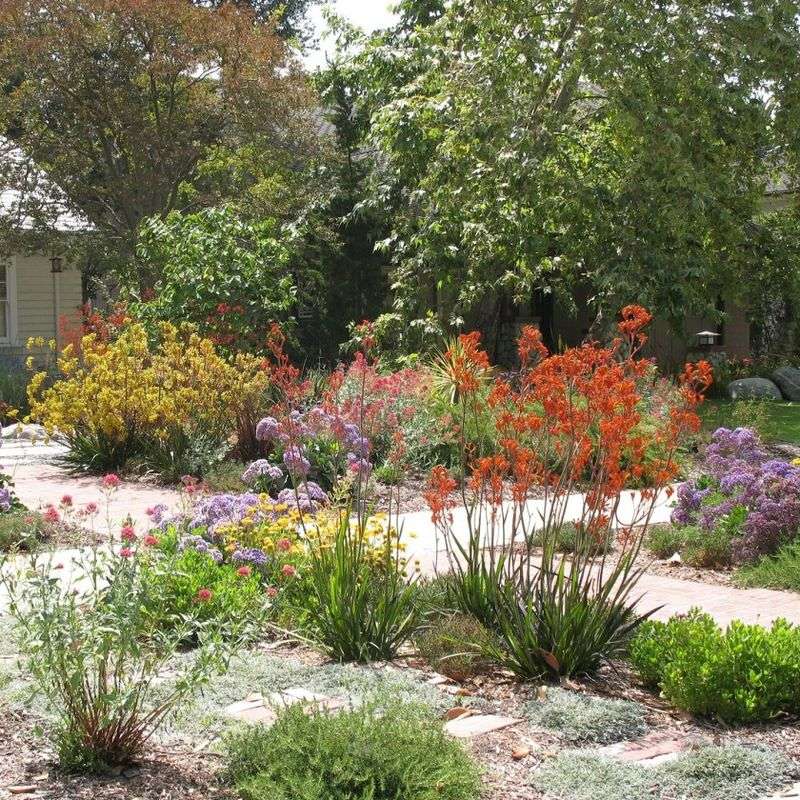Arizona’s hot, dry climate makes choosing the right driveway border crucial for homeowners. The intense summer heat and limited rainfall mean that borders need to withstand harsh conditions while requiring minimal upkeep.
A good driveway border not only enhances curb appeal but also helps prevent erosion and defines the boundaries of your property. For me, the goal was to find something that looked good but didn’t demand too much care in the Arizona heat.
After researching and testing various options, I’ve compiled this list of driveway borders that thrive in our desert environment. These choices combine practicality with aesthetic appeal, perfect for busy homeowners who want attractive landscaping without constant maintenance.
1. Desert-Friendly Gravel Strips
Installing gravel strips along your driveway creates a clean, defined edge that requires almost no maintenance. The desert-toned colors blend naturally with Arizona landscapes, creating a seamless transition.
Rain rarely disturbs properly installed gravel, and weeds struggle to establish themselves in this environment. I added a layer of landscape fabric underneath my own gravel border three years ago, and I’ve barely touched it since.
Choose angular rather than rounded gravel, as it locks together better and stays in place during those occasional heavy monsoon downpours we get in Arizona.
2. Corten Steel Edging
The rusty patina of Corten steel complements Arizona’s earthy landscape perfectly. Once installed, this edging forms a weather-resistant barrier that lasts for decades without needing replacement or painting.
Summer heat actually enhances Corten’s protective layer, making it ideal for our climate. My neighbor installed this edging five years ago, and it looks even better now than when it was new.
The straight lines create a modern look while effectively separating your driveway from adjacent landscaping. Just be sure to wear gloves during installation—those edges can be sharp!
3. Concrete Curbing
Continuous concrete curbing offers a seamless border that stands up to Arizona’s intense summer temperatures without cracking. The initial investment pays off with decades of maintenance-free performance.
Color options range from natural gray to earth tones that complement desert homes. When we installed ours, we chose a sandy beige that almost disappears into the landscape while still defining the driveway edge.
Many local contractors specialize in extruded concrete borders and can complete the installation in a single day. The result is a clean, professional look that never needs painting or replacement.
4. Stacked Flagstone
Natural stone borders bring Arizona’s geological beauty right to your driveway edge. Dry-stacked flagstone requires no mortar, allowing rainwater to drain through while maintaining its structure.
The varied colors in locally sourced flagstone—ranging from rust red to sandy tan—echo the natural landscape. After installing mine last spring, several neighbors asked for my stone supplier’s information.
Larger pieces stay put even during heavy rains, making this an excellent low-maintenance choice. The natural look improves with age as the stones weather slightly and desert dust settles into the crevices.
5. Decorative Precast Concrete Blocks
Manufactured concrete blocks provide structure and style without the maintenance headaches of wood or plants. Their uniform size makes installation straightforward, even for DIY homeowners with basic skills.
Arizona’s climate actually helps these blocks last longer than in humid regions where freeze-thaw cycles cause cracking. The blocks I installed seven years ago still look new despite constant sun exposure.
Many styles mimic natural stone at a fraction of the cost. Some even include built-in lighting options that create dramatic nighttime effects while helping guide visitors safely to your door.
6. River Rock Arrangements
Smooth river rocks create an eye-catching border that stays put in all weather conditions. The varied sizes and natural tumbled appearance bring organic texture to your driveway edge.
Larger stones (3-5 inches) work best for Arizona properties, as smaller pebbles can scatter during strong winds. When arranging my border, I mixed different sizes for a more natural look that mimics dry riverbeds found throughout the state.
A quality weed barrier underneath eliminates most maintenance concerns. The occasional rinse with a hose removes dust buildup and restores the stones’ natural colors after our dusty summer months.
7. Prickly Pear Cactus Line
Native prickly pear cacti create living borders that thrive in Arizona’s harsh conditions. Once established, these plants require virtually no supplemental water, perfect for conservation-minded homeowners.
The seasonal bonus of yellow flowers and purple fruit adds changing interest throughout the year. My driveway border bursts into bloom every spring, creating a stunning display that neighbors always comment on.
Space plants about 18 inches apart initially—they’ll gradually fill in gaps as they mature. Just remember to wear heavy gloves when planting to avoid painful encounters with those tiny spines!
8. Decomposed Granite Bands
Decomposed granite (DG) creates a smooth, natural-looking border that stays in place better than loose gravel. Available in colors ranging from gold to rusty red, it blends beautifully with Arizona’s landscape palette.
Adding a stabilizer to the DG prevents erosion during heavy monsoon rains. The border I installed with stabilized granite has maintained its crisp edge through three rainy seasons without washing away.
Regular raking keeps the surface looking fresh, but this maintenance is minimal—maybe twice a year at most. The fine texture creates a finished look that complements both modern and traditional home styles.
9. Agave And Stone Combination
Pairing architectural agaves with decorative stone creates striking focal points along driveway edges. The plants’ dramatic forms stand out against rock mulch, requiring almost no care once established.
Different agave varieties offer blue, gray, or green coloration to complement your home’s exterior. My favorite combination uses blue-gray Weber agave against crushed red granite—the contrast pops even from the street.
Plant agaves at least three feet apart to allow for their eventual size. Their slow growth means minimal maintenance, with most varieties needing attention only every 5-7 years to remove dead leaves.
10. Gabion Basket Edging
Wire baskets filled with local stone create modern, industrial-style borders that handle Arizona’s heat beautifully. The open structure allows for rainwater drainage while keeping a clean edge between driveway and landscape.
Filling the baskets with multi-colored local stone adds visual interest without maintenance concerns. When I installed mine last year, I collected stones from three different areas to create a naturally varied look.
The metal wire develops a subtle patina over time but remains structurally sound for decades. Unlike concrete, gabions flex slightly during ground movement, preventing cracks that would require repairs.
11. Drought-Tolerant Ornamental Grasses
Selected ornamental grasses provide movement and texture while surviving Arizona’s challenging climate. Varieties like deer grass and blue grama require minimal water once established.
The graceful swaying adds dynamic interest that hard borders can’t match. After planting mine, I’ve enjoyed watching them catch the golden afternoon light—an unexpected bonus I hadn’t considered.
Annual maintenance consists of one cutting back in late winter before new growth emerges. Choose native varieties for best results, as they’ve adapted to local conditions over thousands of years and truly thrive with minimal care.
12. Permeable Pavers
Specially designed pavers create a clean border while allowing rainwater to penetrate into the soil below. This helps prevent runoff and erosion during Arizona’s intense but infrequent downpours.
The wide variety of shapes and colors lets you complement your home’s architecture perfectly. We chose a honeycomb pattern that echoes our mid-century modern home’s geometric elements.
Gaps between pavers can be filled with fine gravel or planted with tough ground covers like desert thyme. Either way, maintenance is minimal—just an occasional sweeping to remove debris that collects in the spaces.
13. Recycled Glass Mulch
Crushed recycled glass creates a border that literally sparkles in Arizona’s abundant sunshine. Available in various colors, this sustainable option adds unexpected visual interest to driveway edges.
Unlike organic mulches that break down, glass mulch never needs replacement. My turquoise glass border has maintained its vibrant color for four years despite constant sun exposure that would fade most materials.
The smooth-tumbled glass pieces are safe to handle and stay cooler than dark rock mulch. A metal or concrete edging keeps the glass contained exactly where you want it, preventing scattering onto the driveway.
14. Aloe Vera Clusters
Clustering aloe plants creates a living border that offers practical benefits beyond beauty. The medicinal gel inside these plants has saved my skin more than once after gardening too long in the Arizona sun!
Their architectural form provides year-round structure while requiring almost no maintenance. Even during summer heat waves, established aloes need watering only once every two weeks at most.
The occasional bright orange flower stalks add surprise vertical elements that attract hummingbirds. Plant them in groups of three or five for the most natural-looking arrangement along your driveway edge.
15. Embedded Solar Lighting
Solar-powered lights embedded along your driveway border serve double duty—defining the edge day and night. Modern versions store enough energy even in winter to provide reliable illumination without wiring or electricity costs.
The gentle glow creates a welcoming approach to your home while improving safety. After installing these along our curved driveway, we’ve noticed guests have a much easier time navigating at night.
Look for models with metal (not plastic) construction that can withstand Arizona’s intense UV exposure. The ones I selected five years ago still function perfectly despite temperatures that regularly exceed 110°F in summer.
16. Native Desert Shrub Groupings
Carefully selected native shrubs create living borders that actually become more self-sufficient over time. Plants like compact creosote bush and brittlebush evolved in Arizona and thrive with minimal intervention.
Their natural growth habits require little to no pruning to maintain an appropriate size. My driveway border of mixed natives has needed trimming only once in three years, despite healthy growth.
Seasonal changes bring different features—silver foliage, yellow blooms, or interesting seed heads depending on the time of year. Grouping different species creates a naturally occurring look that feels right at home in our desert environment.

